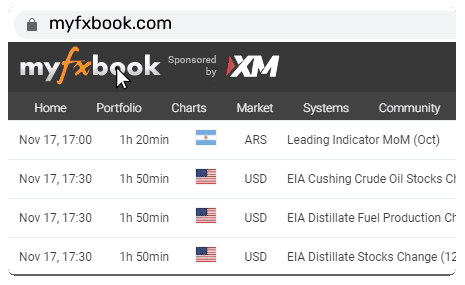Advertisement
Risk management vs. profit potential - how do you find the sweet spot?
I've been trading EUR/USD and GBP/USD for about 6 months, currently risking 2% per trade with a 1:2 RR ratio. My win rate is around 55% but I feel like I'm leaving money on the table. Anyone experimented with increasing position size during strong trend days? What's your approach to scaling risk based on market conditions?
Risking only 2% of what? The risk should be calculated from all your funds and not per one trade. This rule of 2% per trade is someone's old trolling that people take seriously for some reason.
Risk management goes like this: first of all you need to assess what maximal drawdown (in money! not in %) will make you emotionally comfortable, so that you don't start closing positions only because being scared. Obviously this decision will depend on your perception of yourself and all your capital. It's very personal. For example, someone who has only $100k of funds and has no any other capital might feel that his max comfortable DD is 2k, while for someone else this would be 5k or only $500.
For example, lest say that for you it's 1k.
Then you need to back test your strategy and see what volume you need to be trading so that the DD doesn't exceed 1k and what balance you should deposit so that you don't hit the margin stop.
Then you need to see the maximum margin you will be using (deposit load). This will depend on your strategy and the leverage of your account.
Then you can make an adequate deposit.
For example if your broker's margin stop is 50% of the used margin and your deposit load will be 50% the balance, then you can deposit 2k and feel safe, because your max dd will be 1k (50%), and the margin stop will get activated only if you reach dd of 1.5k (75%). You can deposit even more, but if you know that your will start closing our trades yourself when they reach 1.1k or 1.2k so... It's all personal. After all, our goal is to be in control and feel comfortable. Otherwise mistakes and losses are inevitable.
***but if you know that you will start closing your trades yourself when they reach dd of 1.1k or 1.2k so... It's all personal. After all, your goal is to be in control and feel comfortable. Otherwise mistakes and losses are inevitable.
Besides, the rr = 1:2 rule is also a harmful myth. The only thing you should care about is recovery factor - rf, that you are able to reach in your back test. Rf - profit / max dd. The profit can be monthly or yearly. For example, if your max dd = 20% and yearly profit is 60%, then your rf = 3. It's considered amazing. As a beginner you'd probably think, "what?! It's not worth it". Ok, then work on making your reliable back test reach a better rf. But make sure your back test is reliable - only platforms with both bid and ask (like MT5). If it's scalping then only on real ticks. If it's swing then maybe OHLC testing can be enough, if you see that it's reasonably close to real ticks. But even if it's swing, but enters/gets out a lot during the news and in the direction of the price spike, then test only only real ticks (because then the strategy depends more on real spread). Or alternatively, you can simply filter the news out, because you cannot test slippage, that can be really big.
Balancing risk and profit is about knowing how much uncertainty you can handle. If you’re too cautious, you may miss out on growth, but if you take on too much, you could face losses that set you back.
It starts with understanding your own comfort level and financial limits. Then, look for opportunities that offer good returns without stretching your risk too far. Diversifying your investments can help cushion against losses, while tools like stop-loss orders can protect you when things turn south.
Remember, this balance isn’t set in stone. As your goals and the market change, you may need to adjust your approach to keep hitting that sweet spot.
The sweet spot is finding the right balance between how much you risk and how much you aim to gain. Typically, risking 1 - 2% of your account per trade while targeting twice that amount (a 1:2 risk-to-reward ratio) works well for me.
Having the appropriate instruction is the first step in identifying the ideal balance between risk management and profit potential in cryptocurrency trading. Navigating this area without a trustworthy tutor can result in significant losses for novices, often up to 90% or more. Trading might be frightening, but with the right help, it becomes much easier to handle. For this reason, I suggest contacting Ivy Klementich at IvyKlementich on Telegrams. Her multifaceted approaches as my personal investing advisor have proven to be quite successful and approachable for novices. She is the ideal mentor to help you find the correct balance and develop your confidence.














